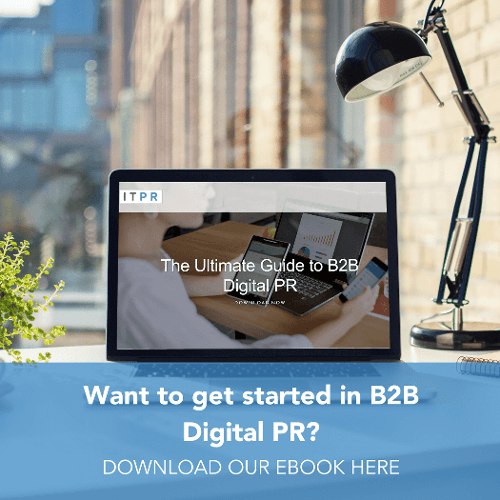Looking to write a B2B case study? Then look no further
In the B2B world, a case study is one of the most effective ways to demonstrate your business’ worth, capability and credibility. As they show off the successes of your business, it can also potentially determine whether a client engages with you for business.
Sure, having statistics and testimonials on your website to demonstrate how your business supported its customers’ success and/or growth is great, but when it comes to actually proving your business’ worth, what you really need is a structured, story-driven and factual account of the work you’ve done – combined with the supporting results and testimonials.
You need a B2B case study.
But where do you begin – and what do you ask your client when looking to create a case study? In this blog, we will provide you with a structured and detailed approach on how to create a B2B case study.
How long should a B2B case study be?
When it comes to creating case studies, the usual length should be somewhere between 600-1,000 words. A lot of this will depend on the complexity of the project in question, but it should include multiple quotes from your customer and be structured around seven key headings:
- Title: Keep it short, compelling and ensure it advertises the most important achievement. A good example is ‘ACME helps RoadRunner Inc to increase lead generation by 75% through personalised mobile campaign targeting Coyotes’.
- Executive summary: This should be a concise summary of the entire project. If possible, include a few statistics that showcase the success and results of the project.
- The background: This section should be an introduction to the company in question which can based upon a company website, LinkedIn company page or other form of official corporate collateral.
- The situation: What was the problem? What did the client need resolved and what solutions or competitors had they tried already?
- The solution: What did your business do to solve the problem? How did you help? This is an important section highlighting how you helped your client.
- The benefits/results: How did your services affect the company and bring about results that helped them to achieve their goals? Include statistics to quantify your contributions – and images to portray the results.
- Supporting visuals/quotes: Ensure you have quotes from a senior figure involved in the process, as this will help to support your case study and validate your contributions. Also, visuals are excellent tools in helping to develop your case study and deliver a more accurate account.
Gear your case study towards your target audience and industry. Your potential customers want to know how you solved problems for businesses similar to theirs – and your case studies should be written to accommodate that.
How do I write a B2B case study?
If you’ve accumulated all the necessary information to fill out the above, you’re already on your way to creating an exemplar B2B case study. However, if you do not have the information you need to create a detailed case study, you need to construct a questionnaire to put to your client.
The success of your case study is wholly dependent on the level of detail you go into, but here are four basic questions you need to ask:
- What are/were your goals?
- What challenges were you experiencing prior to enlisting our services?
- What made our product or service stand out for you? Why did you choose us?
- How have our services helped you? (Do you have any data?)
Remember: Use these questions as a starting point. The depth of the case study will depend on your level of probing when discussing the project and also on the level of service you are providing or provided. Get as much information out of your customer contact as possible and avoid closed questions. You want to build a comprehensive story, and to do so, you need to ask them to ‘describe’ the challenges, the situation, the solution, and the results.
B2B case study: next steps
With your draft case study completed, the next step is to share your draft with the customer for their review and approval.
This is a vital part of the process as it gives them the opportunity to edit what is being said in the case study to ensure its factually accurate, as well as include additional information.
It also reassures the customer that they have complete control over what company information is available in the public domain. This should help the sign-off and final review process as it goes through any official channels. If everything goes well, you will have a brand new B2B case study ready to put live on your website.
If you are a B2B business looking to portray your expertise and generate new business enquiries, case studies are one of the best ways to do it. But not only are they good for generating new opportunities, they’re also historical accolades and awards that you can look back on and be proud of – don’t shy away from creating them!
Tags: Content Marketing




.png?width=60&name=twitter-logo%20(1).png)
